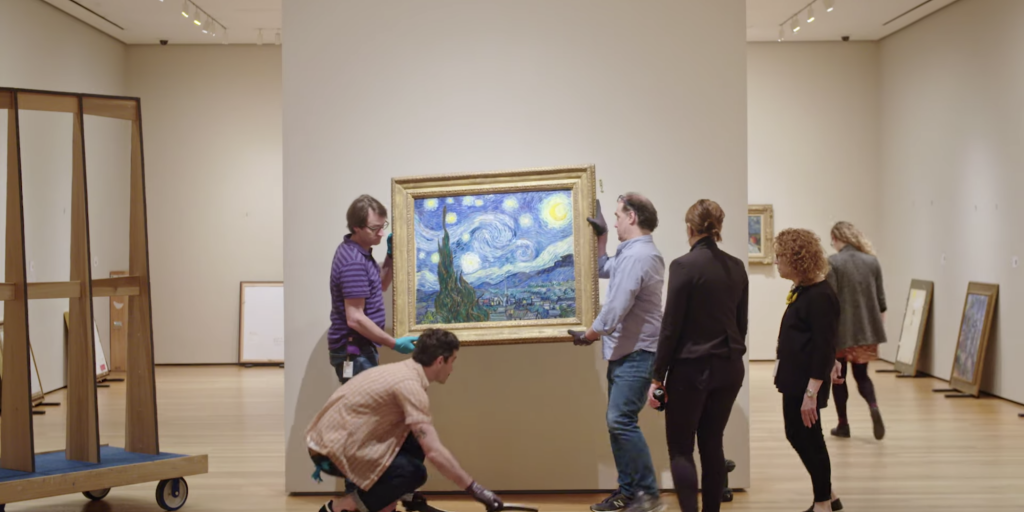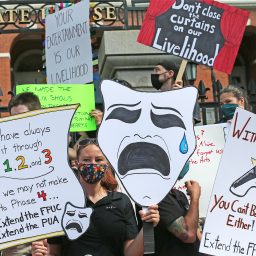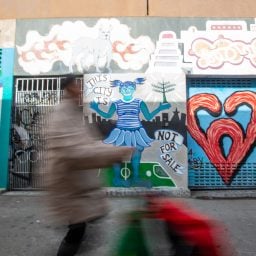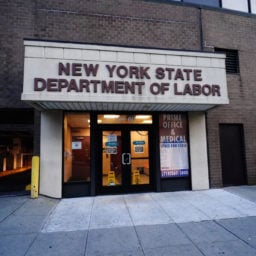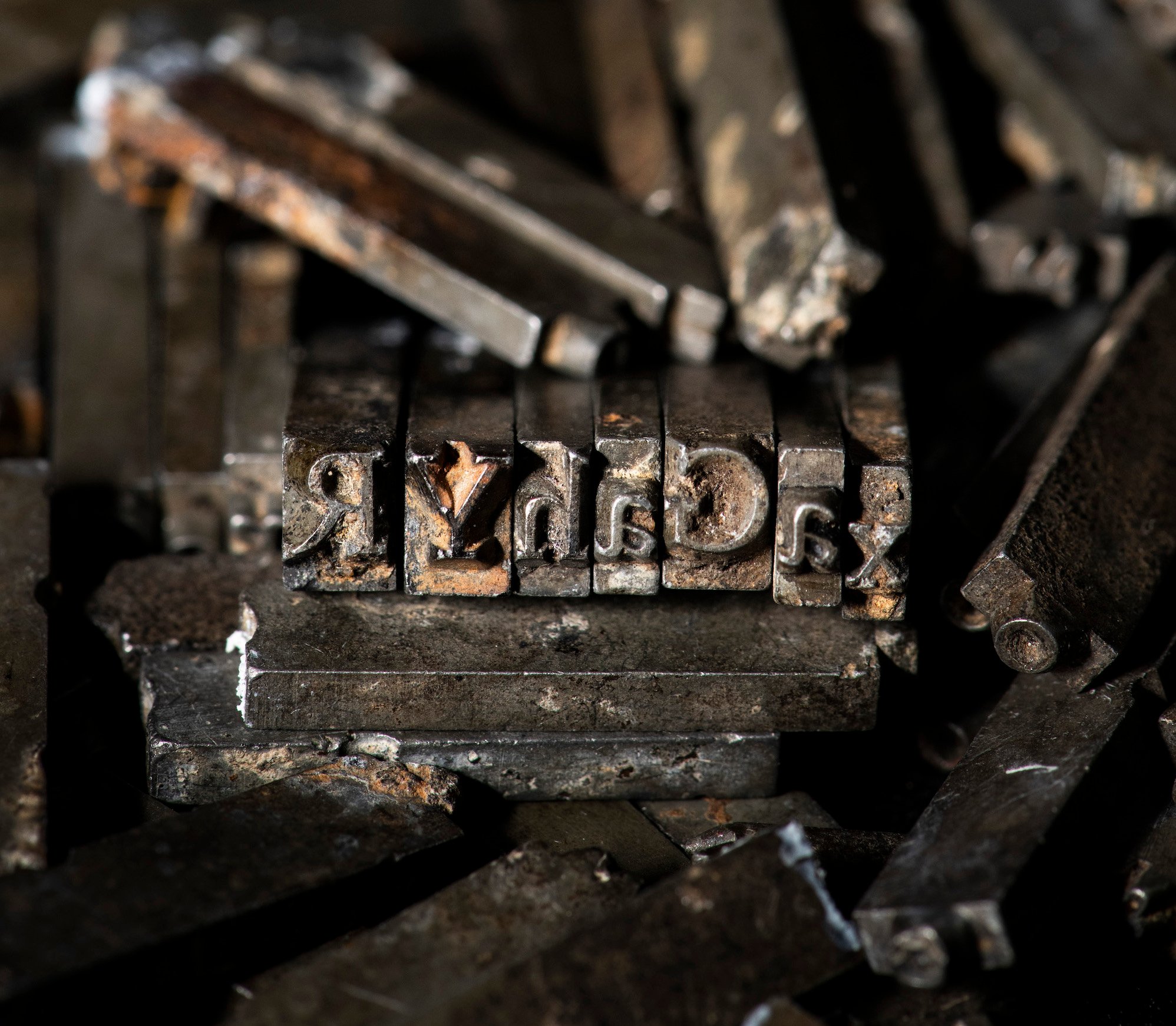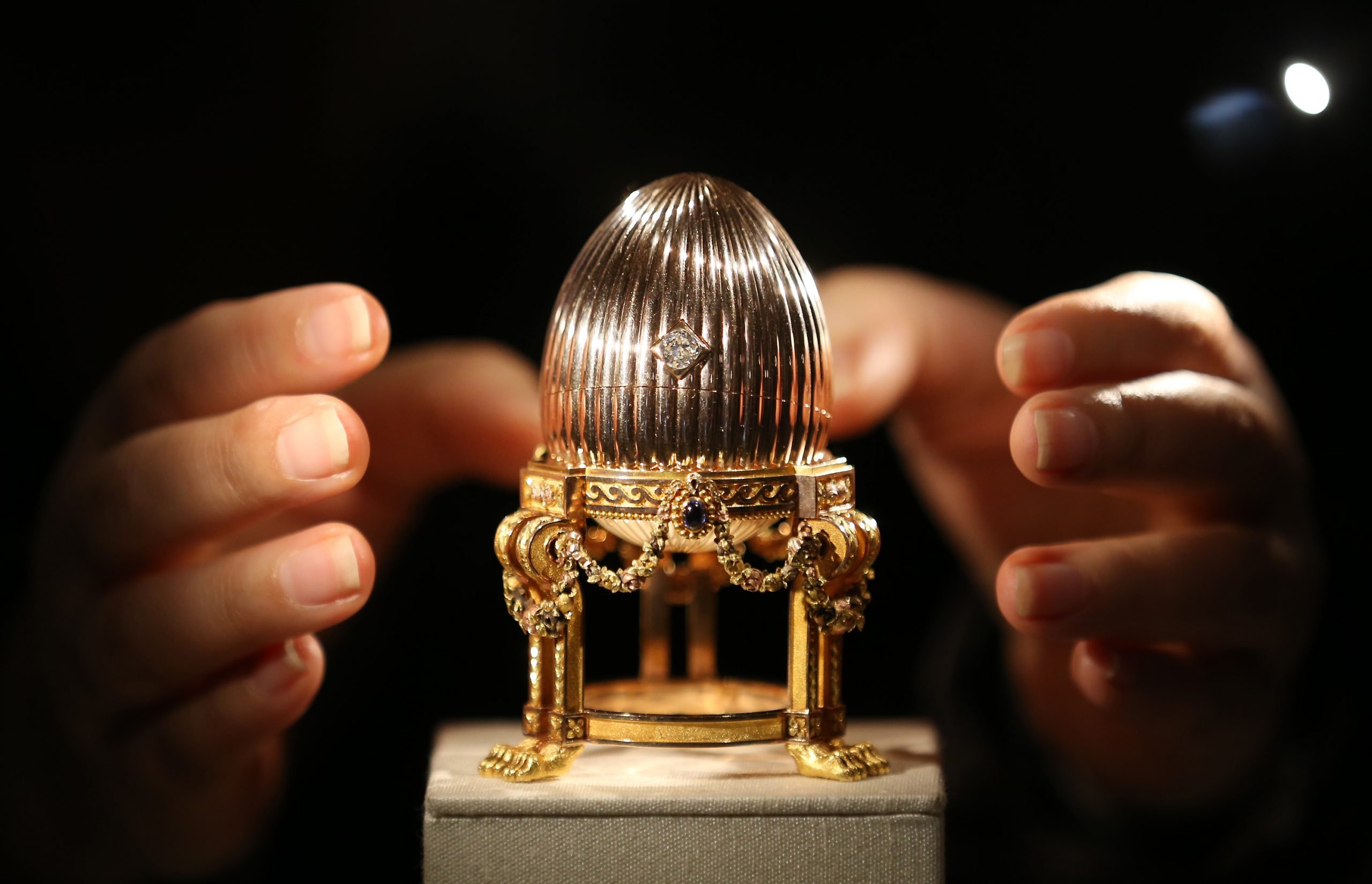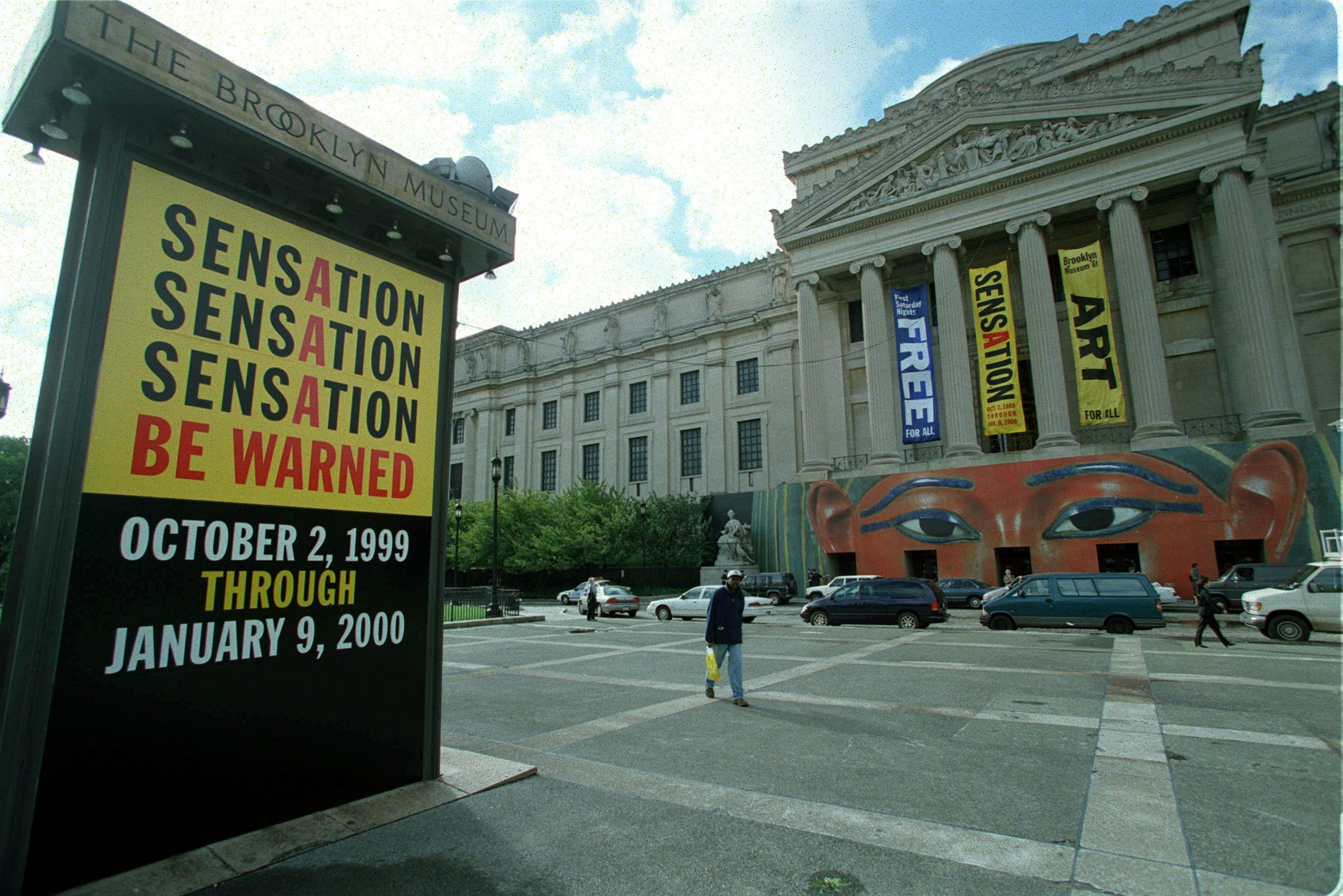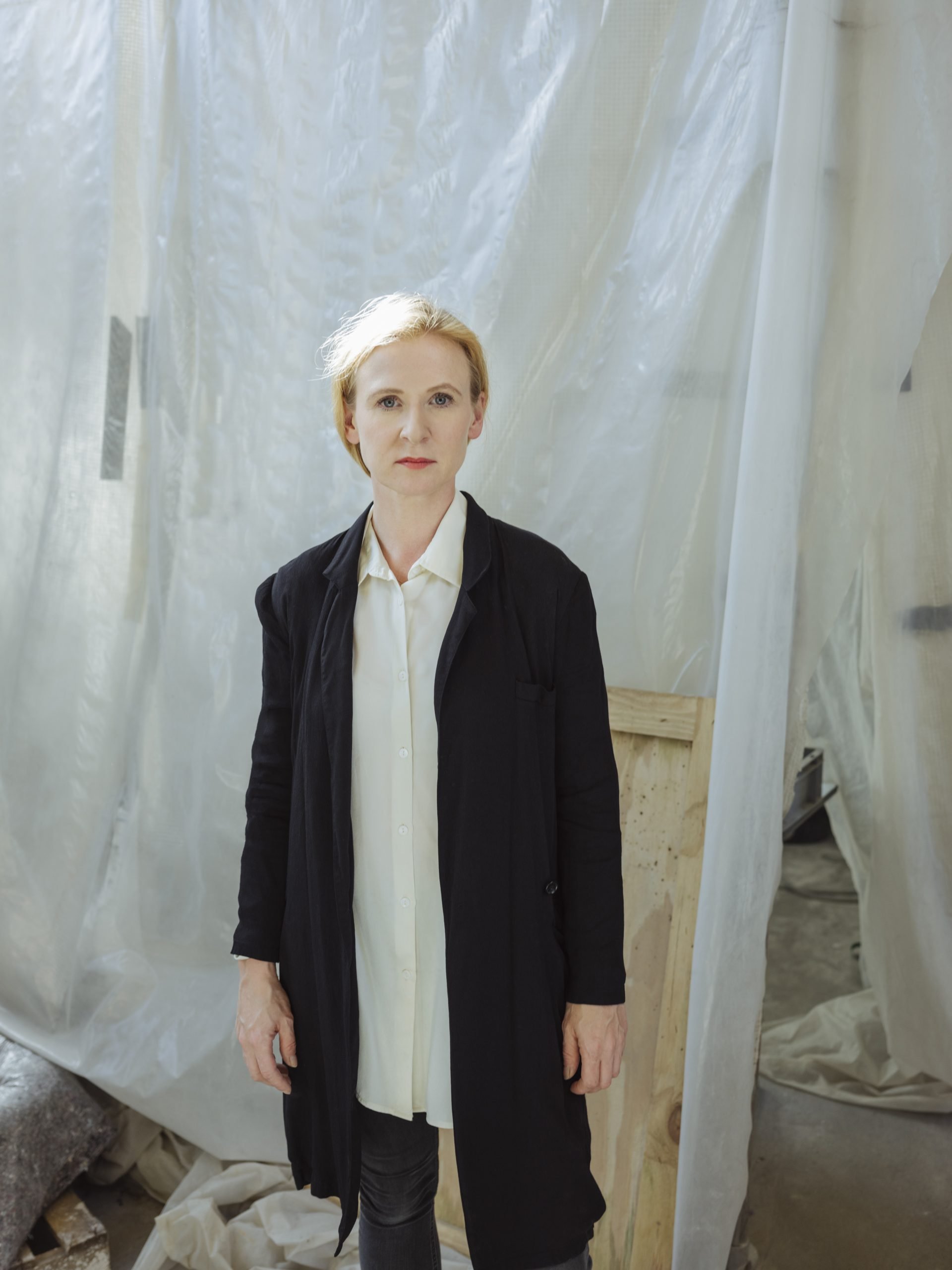In March, US Congress passed the Coronavirus Aid, Relief, and Economic Security (CARES) Act, a $2 trillion stimulus bill that provided unprecedented unemployment support for an unprecedented time.
Among other provisions, it allowed freelancers and the self-employed to apply for state unemployment benefits for the first time. It also provided those who lost work or were otherwise financially impacted by the pandemic an extra $600 a week in federally funded assistance, which has proved to be especially helpful for many.
But things have changed.
Self-employed artists and freelancers are still eligible for unemployment benefits at the state level through the end of 2020, but the Pandemic Unemployment Compensation (PUC) program—that automatic weekly $600 payment—has ended. That means that some 30 million out-of-work Americans will face a significant loss of money compared to what they were getting just a couple of weeks ago.
Where does that leave artists and art workers, especially the great number of them without standard full- or part-time employment?
“Simply put, it’s devastating,” says attorney Joseph Tedeschi, who has been helping artists to navigate the unemployment application process through the nonprofit organization Volunteer Lawyers for the Arts. “For many, that $600 was becoming a lifeline.”
Tedeschi points out that in many cases, artists are doubly hurt: not only are they unable to sell their artwork, but many of their part-time jobs in restaurants or at schools have also been cut.
Such is the case for Zaq Landsberg, a sculptor who works as an art handler, fabricator, and educator.
“I saw approximately one-third to one-half of my yearly income evaporate in the course of a few days in March,” the artist tells Artnet News, noting that his skill sets don’t translate to remote working.
Before the end of July, Landsberg was making just over $1,000 a week in unemployment benefits, including the $600 payment. “That was enough to live on and even save a little money,” he says. “[It] covered my apartment rent, my studio rent, utilities, health insurance, car insurance, and food.”
Now Landsberg is preparing for life with his benefits slashed by more than 50 percent. The money he’s making now just barely covers his monthly bills—not including food—and he’s looking at subletting his apartment and leaving his studio to compensate.
“Losing the PUC benefit is a serious blow, and it’s the difference between me staying afloat and slowly sinking,” he says. “I don’t want to exaggerate—I’m not the hardest hit, I’m not going to starve, I’m not going to be homeless. But trying to sustain a career as an artist and fill the gaps with freelance work seems like it’s not going to be possible in the medium- to long-term without support of some kind.”
The situation is not wholly different for Marina Nebro, an arts educator who was laid off from her full-time position at the Tenement Museum in March. She was approved for state unemployment and federal compensation immediately afterwards, but because the museum and her union were still negotiating her severance package for roughly a month after she was let go, payments were delayed.
Nebro has since been able to pick up some part-time remote work, making her eligible for less than $700 a week in unemployment benefits, which is still more than she would have made at her museum job. But now that support will be all but wiped out with the end of the $600 program.
“As someone that is fortunate to have savings, a supportive family, and part-time work, I will be able to make it,” Nebro says. “But without that help, I would very much be in financial trouble.”
Still, for those dependent on federal assistance during this time, there is some hope.
Congressional leaders in both parties agree that an extension of those benefits is necessary as COVID-19 cases continue to rise significantly in parts of the country, and the number of unemployed individuals still greatly outweighs the number of available jobs. (There are 14 million more people out of work than there are job openings, according to a recent study by the Economic Policy Institute.)
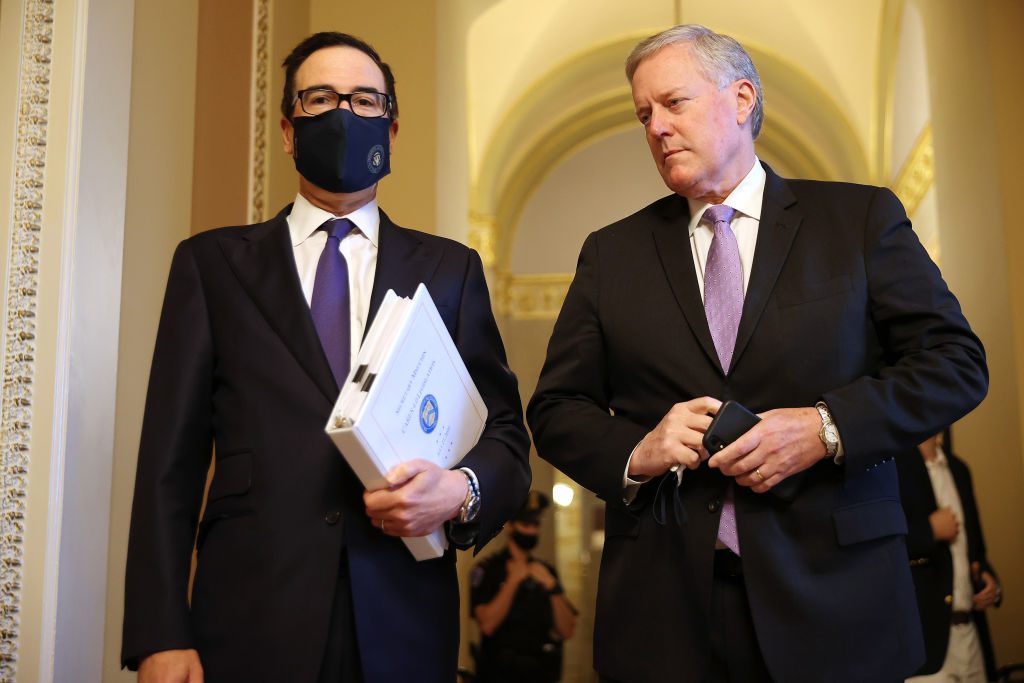
U.S. Treasury Secretary Steven Mnuchin and White House Chief of Staff Mark Meadows at the U.S. Capitol August 03, 2020 in Washington, DC. (Photo by Chip Somodevilla/Getty Images)
Congress has been attempting to hammer out a new stimulus package, though approaches to such a bill are split along partisan lines. Democrats want an extension of the $600-a-week payments, while Republicans, including Senate majority leader Mitch McConnell and Secretary of the Treasury Steven Mnuchin, are seeking a lower number, arguing that Americans are less inclined to seek out work when they’re getting paid by the government.
“This is an incredibly false representation of economics and economic incentives,” says Tedeschi, whose wife, a dancer, has also lost work and income because of the pandemic. “I have yet to meet [an artist] who would not rather be performing their craft, building their portfolio, or working on projects than sitting home and collecting $600 a week.”
“It’s an absurdity, and in the artistic community, I think it’s deeply offensive,” he adds. “The people in any artistic community, save for the most successful, are already making such magnificent sacrifices economically to ply their craft. That, to me, is the biggest con of the whole argument.”
Follow Artnet News on Facebook:
Want to stay ahead of the art world? Subscribe to our newsletter to get the breaking news, eye-opening interviews, and incisive critical takes that drive the conversation forward.
